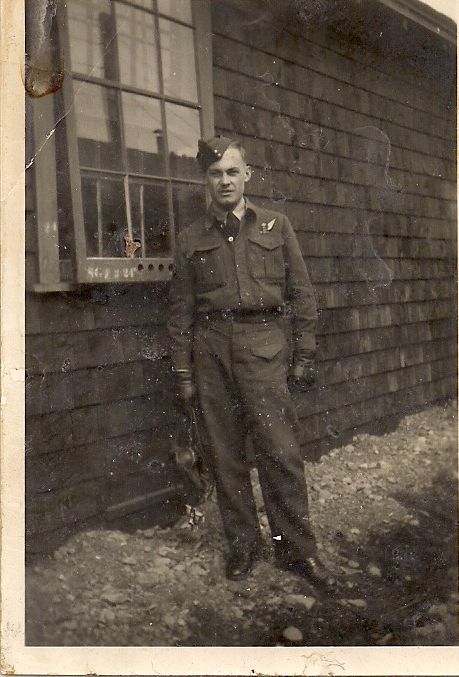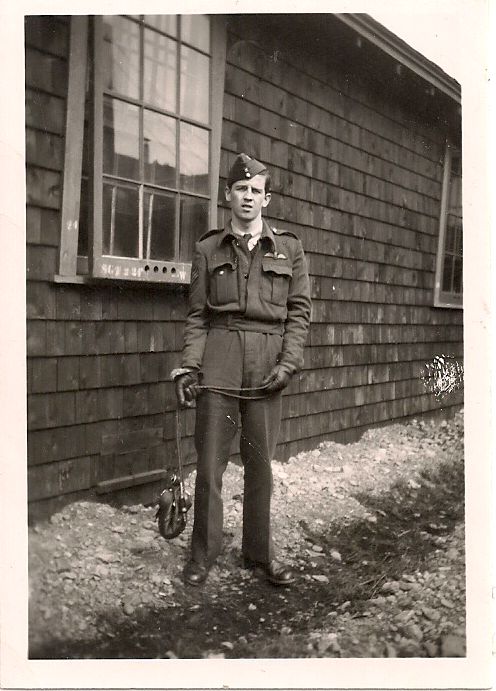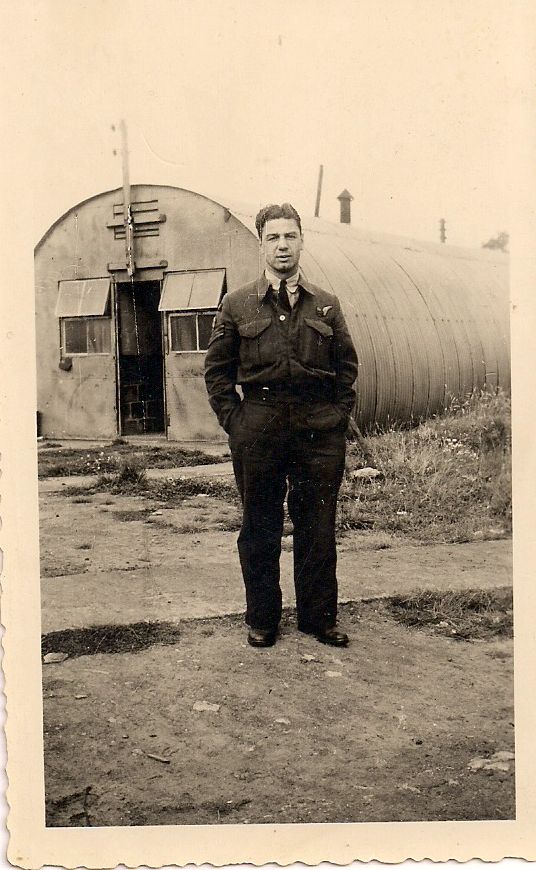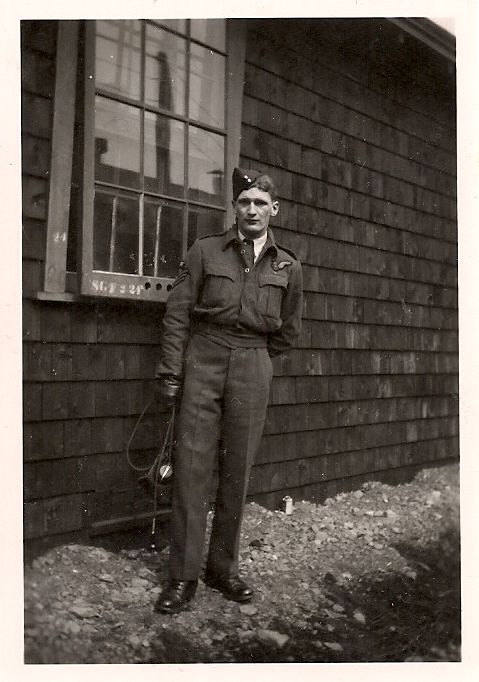My Dad Overseas
Back to My Home Page | Back to My Dad Page | The 98 Squadron Page | Dad's Close Calls
The Mitchell
I have decided to post the pictures that dad brought home from overseas in World War 2. I didn't put a lot of thought into this web page. Just to get the pictures up before they are lost. Dad's picture is suffering from a recent beverage spill.
These are all taken, as far as I know, at Melsbrook Airport near Brussels, Belgium, when it was occupied by the RAF. My dad's unit was 98 Squadron Royal Air Force British Liberation Army. Dad served as a Navigator-Bombadier in a North American B-25 Mitchell medium bomber. He used the Norden bombsight. The RAF manned these planes with a crew of four - Pilot, , Navigator-Bombadier and two Air Gunners (top turret and tail). The Americansflew these planes with a six man crew with a co-pilot and a radio operator. The planes were built in the U.S.A, they were all metal, and armed with the American .50 calibre machine guns. These were called "point 5's" and were much better than the .303 machine guns on the British bombers. The planes carried eight 500 pound bombs. Dad didn't mention any other type of bombs being used.

My Dad - The navigator-bombadier
My dad was the navigator-bombadier of the plane. He did not qualify as a pilot because he could not master the 4 point langing and his aircraft recognition was weak. As a result he went overseas as a navigator-bombadier. He sat in the nose of the plane just in front of the pilot. He used the Norden bombsight which was connected to the control cables in the plane. When dad turned the dials on the bombsight it moved the plane. The switch for releasing the bombs was above his head.

The Pilot
The pilot was Paddy Clune from Northern Ireland. Notice the pilots wings on his uniform. After the war he worked as a pilot for Royal Dutch airlines. Paddy was not an officer. If you look closely you can see the sargent's stripes on his right sleeve. Since the pilot was not an officer dad's plane was in the back of the formation. The lower the rank of the pilot the farther back in the formation your plane flew. The farther back in the formation you flew, the greater was your chance of getting hit by ack ack (anti-aircraft fire).

The Top Turrent Gunner
The top turret gunner operated the twin .5 machine guns in a turret on the roof of the plane. The top turret gunner was Gil Folka from British Columbia. He lost an eye when a a German 105 mm anti-aircraft shell exploded off the muzzles of his machine guns and drove the metal from the reflector gun sight into his eye. Dad had to craw back to the gunner's position and do a first aid job on the eye. Later the medical officer said it was a pretty good first aid job, but there was no way that the eye could have been saved. I will go into this incident in depth later.

The Tail Gunner was Steve Durnin from British Columbia.
Below is Steve Durnin from British Columbia.

The absent radio operator
The Americans flew the B 25 Mitchell with a five man crew which included a radio operator. The RAF flew the plane with a 4 man crew with no designated radio operator. The RAF used a radio system that all of the crew members could use. I believe that the items that dad and some of the others on this page are carrying are the headphones for the radio. Once someone told a dirty joke on the radio during a mission and the RAF women radio operators overheard it. I don't knw the details but evidently this created a big stink when the the crews returned to base. The RAF ran a clean war and profanity on the airwaves was a definite no no.